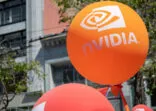Japan is again in the headlines after Prime Minister Shinzo Abe won a decisive victory in snap elections last week, allowing him to continue with the “third arrow” of structural reform from a more solid power base.
Two companies that have had long-established footholds in Japan are Aberdeen Asset Management and Baillie Gifford, with the Japan Equity Fund and Japanese Fund, respectively.
Both have performed consistently above the market average, but there can only be one with an edge, as picked by our two investment experts.
Overall long-term track record

Entering the market in 1992, Aberdeen’s Japan Equity Fund has returned 62.4% in the last decade. While that figure is admirable, the Baillie Gifford Japanese Fund delivered 89% in the same time-frame. The sector average is about 50%.
Darius McDermott, managing director of Chelsea Financial Services, said: “Over the long term, both of these funds have outperformed the IMA Japan sector peer group average substantially. However, the consistent outperformance of the Baillie Gifford Japanese Fund is remarkable.”
Nick Sketch, senior investment director at Investec Wealth & Investment, added: “Both are sensibly managed. Aberdeen’s fund performance was poor until about 2008 but has been pretty good since then, with much the same biases – value, cash flow, quality – that we all associate with their other Asian funds. Baillie Gifford coped a little better in the tough times of 2005 to 2008, though no high Beta approach found that period easy.”
The fund managers

The Baillie Gifford fund is run by a team of six, headed by Sarah Whitley, who has been with the firm’s Japanese equity arm since 1982.
“Sarah Whitley at Baillie Gifford is an outstanding manager,” Sketch said. “However, her consistent style – leaning toward mid-caps and small-caps, growth, higher beta names and domestic exposure – will not suit all investors all of the time.”
However, the Aberdeen fund, run by the firm’s Asian equities team, has been the outperformer over the last decade.
“The Aberdeen fund has a team-based approach that also draws on Aberdeen’s deep resource of Asia Pacific analysts,” McDermott said. “The team’s process focuses on identifying high-quality growth companies on attractive valuations to generate a long-term total return above the Topix.”
When have the funds outperformed?

“While both funds have performed strongly over the long term, the Baillie Gifford fund has shown itself to be more consistent,” McDermott said. “It has been first or second quartile in eight of the last ten years, which is remarkable. Investors can expect less volatility than with the Aberdeen fund.”
Sketch added: “Baillie Gifford has outperformed the benchmark since 2008. However, few growth managers have had an easy time in the last year or so, even the good ones, and Baillie Gifford falls into that category.”
When have the funds underperformed?

Despite the Baillie Gifford fund’s success over the long-run, the struggling market has seen it endure a disappointing 2014.
On the other hand, the Aberdeen fund has underperformed in four of the last ten years, as McDermott explained.
“There does not appear to be a clear correlation between under and outperformance in terms of cycles,” McDermott elaborated. “But the fund does tend to oscillate between fourth and first quartile performance. However, over three and five years, the fund has delivered outperformance above the peer group.”
Sketch put the funds’ susceptibility to extreme fluctuations in the market down to their offensive approaches.
“Neither is ultra-defensive and both have suffered when the market itself does really badly,” he said.
“Otherwise, Aberdeen’s biases probably explain their poor 2013 and good 2014. Baillie Gifford unsurprisingly has rather the reverse short-term behaviour, with a very good 2013 and weaker 2014.”
Fees
The Baillie Gifford fund levies an annual management charge (AMC) of 0.65%, which is lower than the average cost of the competition.
Aberdeen’s AMC on its Japan fund stands at a more expensive 0.75%, but one that is on a par with its peers.
“Neither fund has an excessive fee,” Sketch said. “As a result, the most important point is therefore making sure that one holds the cheapest units possible, not on worrying too much about the headline AMC.”
Conclusion
“These are both excellent options for investors seeking to gain exposure to the Japanese equity market,” said McDermott. “However, the Baillie Gifford fund’s long-term consistency of alpha generation makes it a stand-out performer in its class.”





















